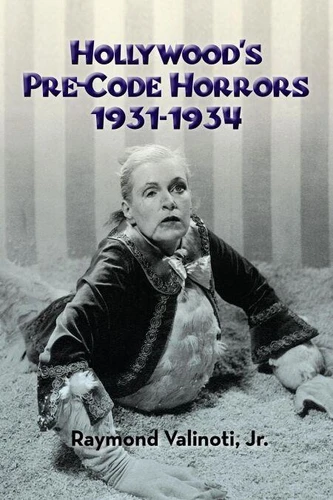Hollywood's Pre - Code Horrors 1931 - 1934
Par :Formats :
Disponible dans votre compte client Decitre ou Furet du Nord dès validation de votre commande. Le format ePub est :
- Compatible avec une lecture sur My Vivlio (smartphone, tablette, ordinateur)
- Compatible avec une lecture sur liseuses Vivlio
- Pour les liseuses autres que Vivlio, vous devez utiliser le logiciel Adobe Digital Edition. Non compatible avec la lecture sur les liseuses Kindle, Remarkable et Sony
 , qui est-ce ?
, qui est-ce ?Notre partenaire de plateforme de lecture numérique où vous retrouverez l'ensemble de vos ebooks gratuitement
Pour en savoir plus sur nos ebooks, consultez notre aide en ligne ici
- FormatePub
- ISBN978-1-393-22354-2
- EAN9781393223542
- Date de parution05/06/2019
- Protection num.pas de protection
- Infos supplémentairesepub
- ÉditeurRelay Publishing
Résumé
In the first few years of the Great Depression, before the Production Code was rigidly enforced in 1934, Hollywood took advantage of its laxity, producing racy and violent films that titillated filmgoers and outraged reformers. The American horror genre blossomed during this time and the studios exploited its lurid possibilities. The results were both shocking and controversial. Some of these films remain unsettling today.
Hollywood's Pre-Code Horrors 1931-1934 appraises all of these films, from Dracula (1931), which spearheaded the American horror market, to The Black Cat (1934), the last chiller released before the strengthening of the Code. Each film is thoroughly analyzed, not only in its insinuations and/or portrayals of sex and violence, but in the context of the era in which it was made and the reactions of critics and filmgoers during this time.
Raymond Valinoti, Jr. is a resident of Berkeley Heights, NJ. He has a Master's in Library Science from Rutgers University and is a freelance researcher. He is also the author of Another Nice Mess: The Laurel and Hardy Story. His articles on films have been published in the magazines Midnight Marquee and Films of the Golden Age.
Hollywood's Pre-Code Horrors 1931-1934 appraises all of these films, from Dracula (1931), which spearheaded the American horror market, to The Black Cat (1934), the last chiller released before the strengthening of the Code. Each film is thoroughly analyzed, not only in its insinuations and/or portrayals of sex and violence, but in the context of the era in which it was made and the reactions of critics and filmgoers during this time.
Raymond Valinoti, Jr. is a resident of Berkeley Heights, NJ. He has a Master's in Library Science from Rutgers University and is a freelance researcher. He is also the author of Another Nice Mess: The Laurel and Hardy Story. His articles on films have been published in the magazines Midnight Marquee and Films of the Golden Age.
In the first few years of the Great Depression, before the Production Code was rigidly enforced in 1934, Hollywood took advantage of its laxity, producing racy and violent films that titillated filmgoers and outraged reformers. The American horror genre blossomed during this time and the studios exploited its lurid possibilities. The results were both shocking and controversial. Some of these films remain unsettling today.
Hollywood's Pre-Code Horrors 1931-1934 appraises all of these films, from Dracula (1931), which spearheaded the American horror market, to The Black Cat (1934), the last chiller released before the strengthening of the Code. Each film is thoroughly analyzed, not only in its insinuations and/or portrayals of sex and violence, but in the context of the era in which it was made and the reactions of critics and filmgoers during this time.
Raymond Valinoti, Jr. is a resident of Berkeley Heights, NJ. He has a Master's in Library Science from Rutgers University and is a freelance researcher. He is also the author of Another Nice Mess: The Laurel and Hardy Story. His articles on films have been published in the magazines Midnight Marquee and Films of the Golden Age.
Hollywood's Pre-Code Horrors 1931-1934 appraises all of these films, from Dracula (1931), which spearheaded the American horror market, to The Black Cat (1934), the last chiller released before the strengthening of the Code. Each film is thoroughly analyzed, not only in its insinuations and/or portrayals of sex and violence, but in the context of the era in which it was made and the reactions of critics and filmgoers during this time.
Raymond Valinoti, Jr. is a resident of Berkeley Heights, NJ. He has a Master's in Library Science from Rutgers University and is a freelance researcher. He is also the author of Another Nice Mess: The Laurel and Hardy Story. His articles on films have been published in the magazines Midnight Marquee and Films of the Golden Age.



